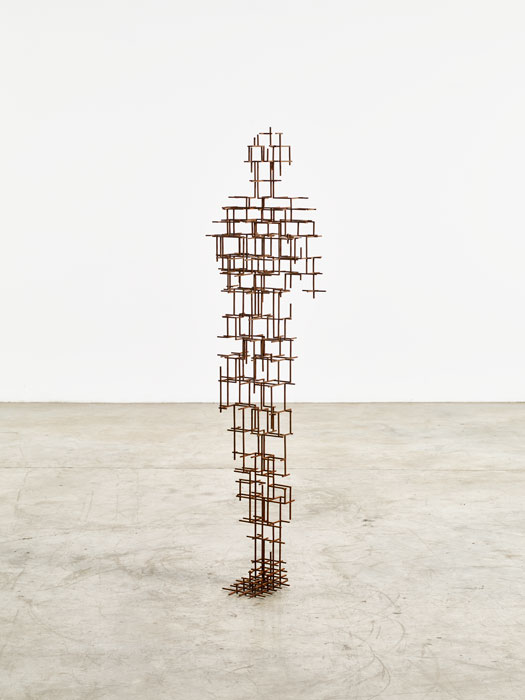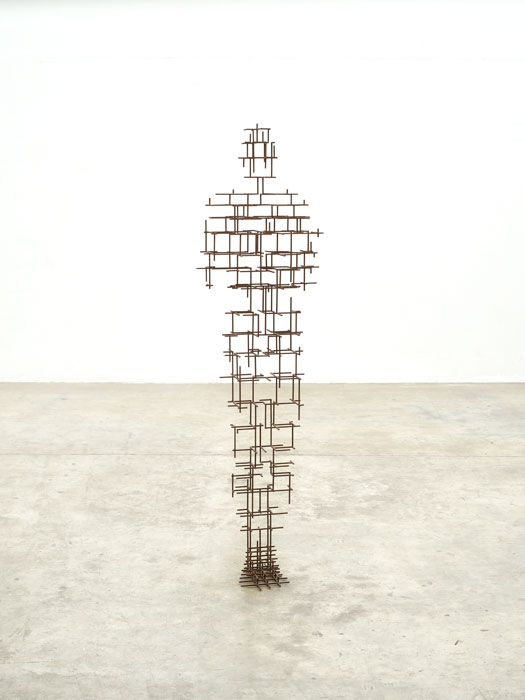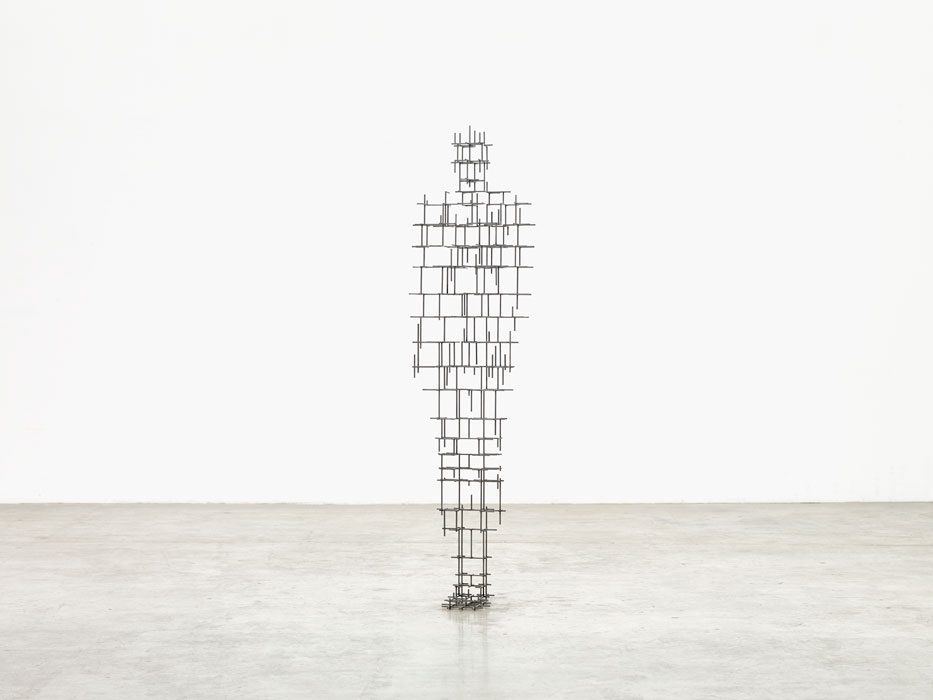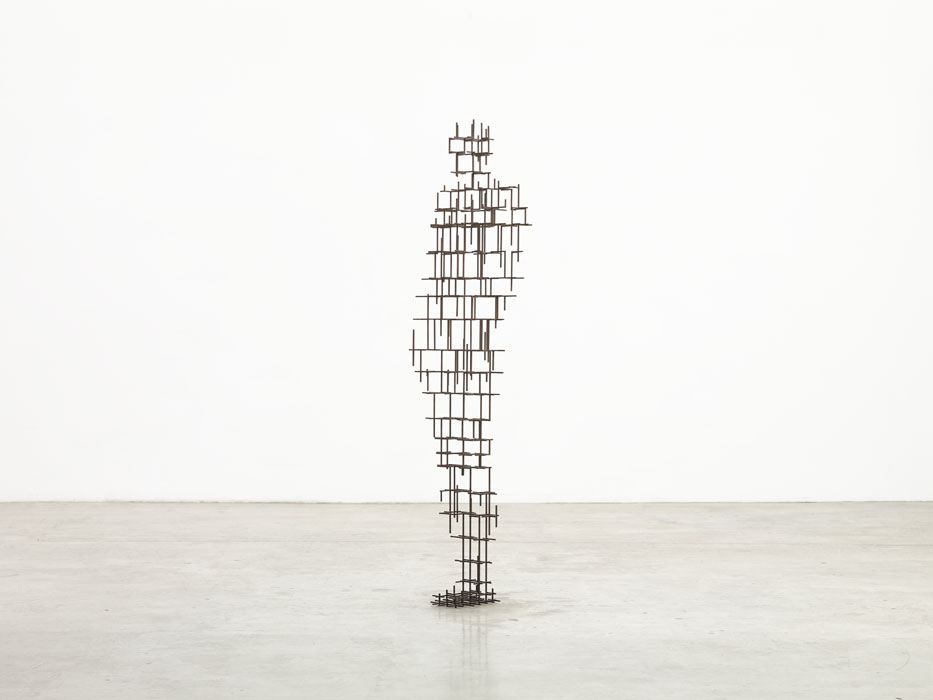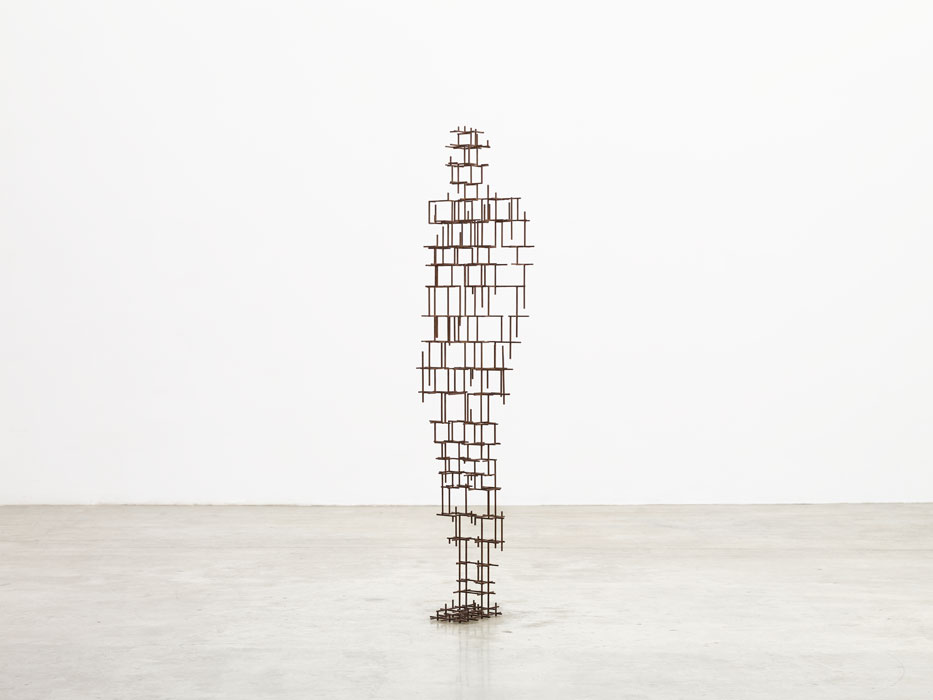The grid is the structure that informs industrial modernism. It is the trellis against which the contemporary body is framed.
In the GRIDWORKS, I wanted to make an objective correlative of the way we have internalised the external structure of the city in our use of digital communication. We now use its binary code universally as a means of self-analysis, self-extension, self-expression and comparative knowledge. This is expressed materially in earlier GRIDWORKS like SET, and reduced to a measure in works like MEAN. SET could be seen as a resolution of the paradox of an internalised scaffold.
The MINED GRIDWORKS try to counter the inevitability of the mechanical with the branching systems of neurological structures. While at first the grids look like regular orthogonal repeated cells (as in a tesseract), that is not the case. The proportionality (particularly in compression) of the intervals between the lateral levels of the grid are all determined intuitively.
From the beginning I wanted these works to have psychological implications. The grids are designed to carry feeling.
The sculptures can be thought of as the result of an internal diagnosis and as instruments for the viewer to undertake an investigation of the internal condition of his or her own body. This has nothing to do with applied anatomy, but is a form of scanning similar to that employed in the meditational technique of Vipassana, where the meditator sweeps through his or her body with acute concentration, in order to discover flow and blockage.
In distinction to the clean steel of SET and MEAN, all the MINED GRIDWORKS have been allowed to rust to make a reference to organic processes and the concentrated mineral material of their making.
As with all of the work, they are an attempt to collapse the dialectic of interior and exterior, open and closed, precariousness and stability, and reconcile the distinction between reception and transmission.

